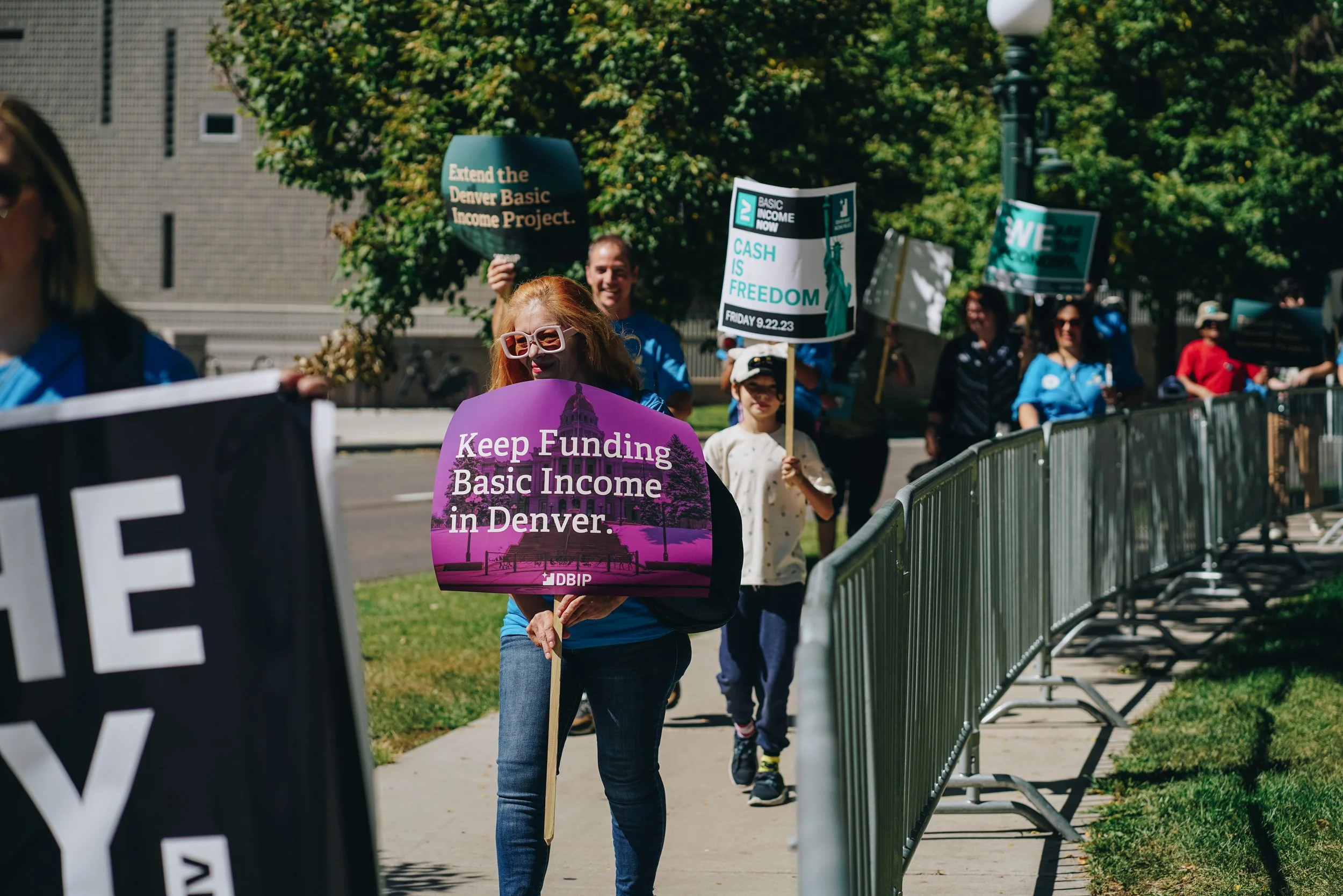Colorado’s State of Homelessness 2024: Why Cash Is Key to Ending—not Just Managing—Poverty
By Gwen Battis, Project Manager, Denver Basic Income Project
A report that pulls back the curtain
Colorado’s first-ever State of Homelessness Report landed last week, and its findings are sobering: 52,806 Coloradans turned to homeless-response agencies for help in 2024. Nearly a third of them were chronically homeless, one in five was over 55, and 6 percent were veterans. On a single January night, volunteers counted 13,069 people without a permanent place to sleep—roughly one out of every 450 residents in the state.
Behind those numbers is a system stuck in triage. Each month about 5,000 new people enter the crisis system while only 750 secure permanent housing, leaving thousands cycling between shelters, street encampments, and temporary fixes.
What’s driving the crisis?
The report points the finger squarely at structural economics:
A 134,000-unit shortfall in affordable rentals makes Colorado the 6th least-affordable state in the country.
To rent a modest two-bedroom apartment, a worker earning minimum wage would need to put in 104 hours every week—that’s 2.6 full-time jobs.
Eviction filings surged 20 percent in 2024, even after federal pandemic aid wound down.
Layer historic racial inequities on top of that—Black, Indigenous, and multiracial Coloradans are drastically over-represented among people experiencing homelessness—and the path into housing insecurity becomes painfully clear.
Guaranteed income changes the equation
The Denver Basic Income Project (DBIP) was founded on a simple premise: if the problem is a chronic shortage of cash, give people cash—no strings, no paternalism, just trust.
Our own data now backs that premise: almost half of unhoused participants moved into housing within a year, compared with the 6–12 percent transition rate typical in traditional programs. Participants also reported better food security, stronger mental health, and fewer ER visits and police contacts.
Why does it work?
Immediate relief without bureaucracy. Cash arrives faster than vouchers or vouchers plus paperwork. In a state where the average rent subsidy per affordable unit jumped 191 percent in two years, speed matters.
Agency and dignity. Each household can decide whether today’s most urgent need is a security deposit, fresh groceries, bus passes, or childcare. That flexibility is impossible to replicate with siloed aid.
System savings. When fewer Coloradans churn through shelters, ERs, and jails, scarce public dollars can be redirected toward building more housing stock and wrap-around services.
In other words, guaranteed income doesn’t just cushion the fall; it widens the runway to lift people out of homelessness entirely.
From crisis management to true resolution
The COHMIS report is candid: Colorado’s homelessness response system cannot “manage” its way out of a 52,000-person housing gap with existing tools alone. To bend the curve, we must pair brick-and-mortar housing investments with income floors to keep people stably housed once they get there.
Cash infusions prevent evictions well before court filings.
They buy people time to secure better-paying work or address health needs, shrinking the inflow into shelters.
Direct cash complements—but does not replace—supportive housing, mental-health services, and coordinated entry systems already in motion.
That three-legged stool—adequate supply of affordable housing, supportive services, and unconditional cash—turns the goal of “rare and brief” homelessness into a realistic, measurable benchmark.
A call to invest in people
The State of Homelessness Report underscores a truth we live every day at DBIP: the cost of doing nothing is colossal, both in human suffering and public expenditure. But guaranteed income is a proven, scalable solution that shifts resources from crisis response to prevention and permanence.
We invite policymakers, philanthropists, and neighbors to stand with us:
Fund additional guaranteed-income cohorts so that more than 800 Coloradans can experience the stability our first pilot delivered.
Integrate direct cash into statewide Built for Zero strategies to accelerate veteran and chronic-homelessness reductions.
Advocate for federal, state and citywide policies that recognize cash transfers as an essential pillar of any homelessness-response and prevention continuum.
In a tightening economy where federal social safety nets are fraying, guaranteed income is the lifeline that restores dignity, stability, and agency. Let’s choose solutions that end homelessness—not just shuffle it from one corner of the state to another.
Join us in investing in people, one cash payment at a time.

